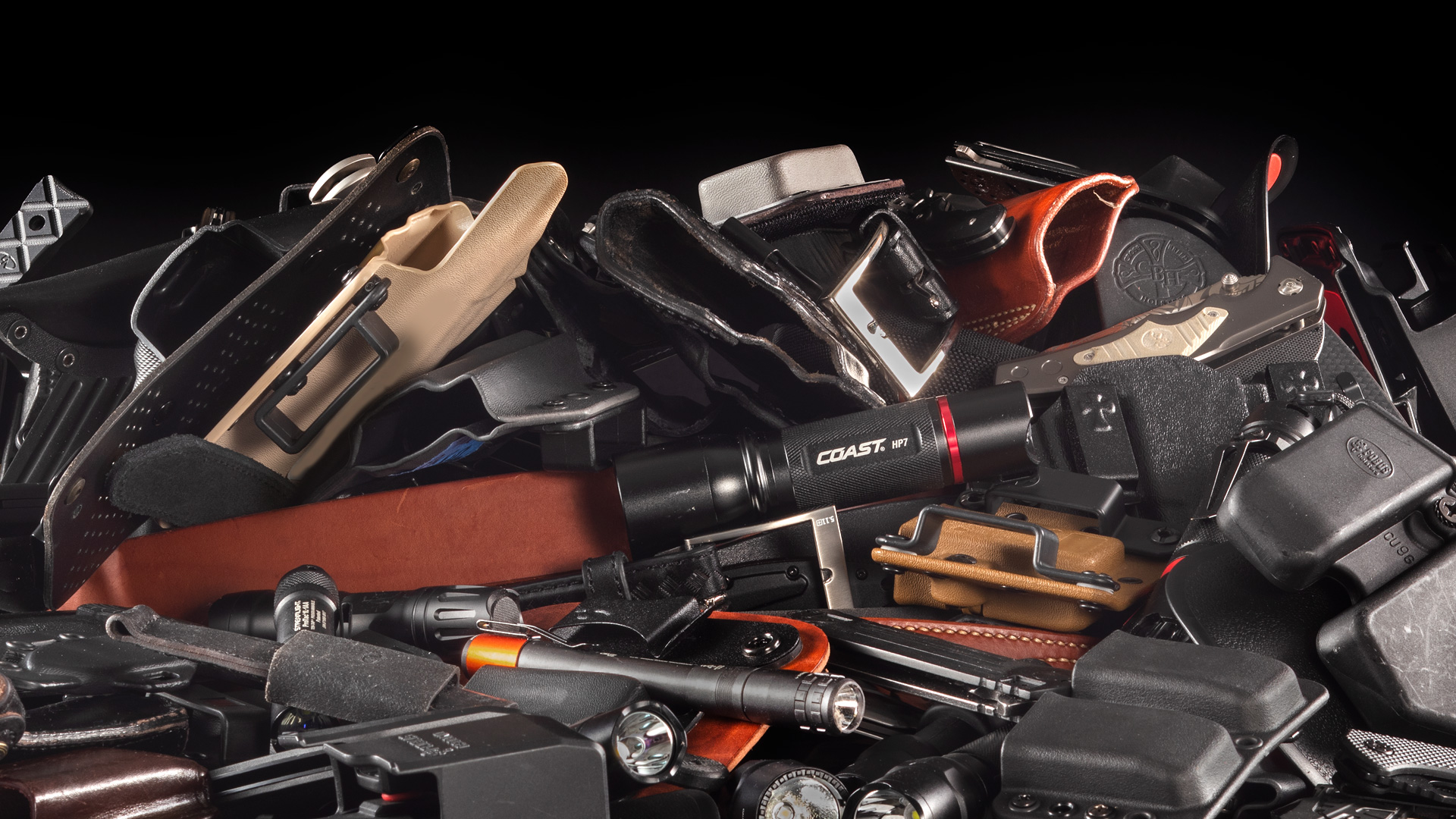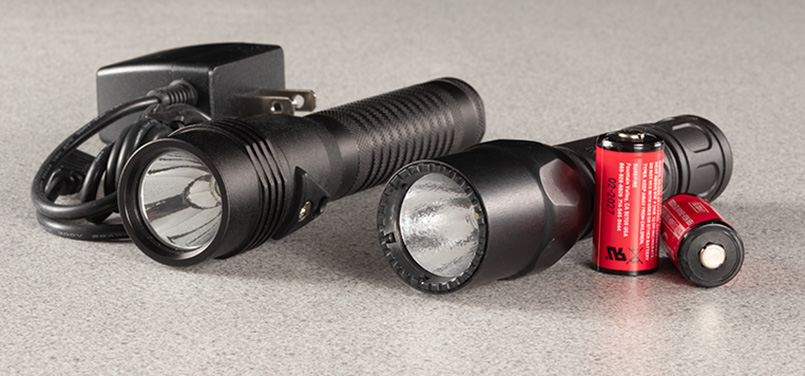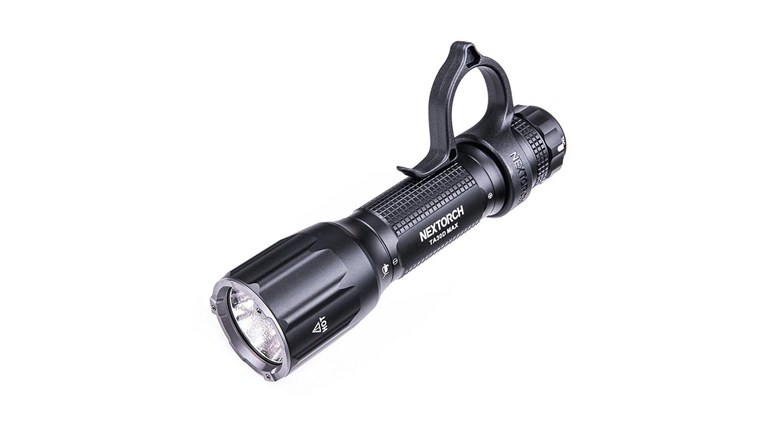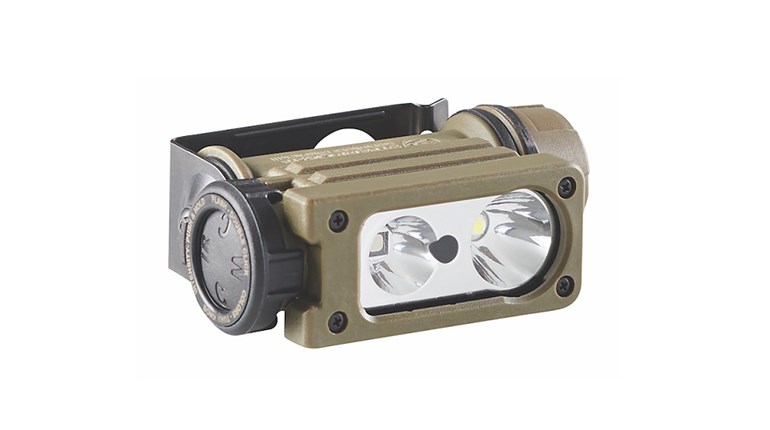
When it comes to purchsasing gear, who among us doesn’t have boxes (or closets) full of stuff we’ve bought but seldom, if ever, use. Most shooters ask the same questions: what’s the best gun out there, what’s the best ammo out there, what are the best sights or optics out there, what’s the best holster out there, what’s the best EDC knife out there? You might find the answers to these (and other gear questions) to be surprising. What are the guidelines, pitfalls and tourist-traps to looking for and acquiring the “best of the best”?
In a consumer world brimming with choices, the quest for high-quality products is a universal endeavor. From the allure of finely crafted Swiss watches to the promise of longevity in a luxury leather holster, the pursuit of the best is more than just a fleeting trend—it’s a fundamental aspect of human behavior. But, what drives us to seek out these high-quality products, and why does the question “Which is the best one?” resonate so deeply within us?
As shooters, at the heart of our desire for quality products lies a blend of psychological and social factors. One primary motivator is the inherent need for reliability: Quality products often promise durability and performance, reducing the uncertainty and risk of dissatisfaction. This assurance brings peace of mind, knowing that our investment will stand the test of time.
Quality is often synonymous with craftsmanship. The meticulous attention to detail, the skilled artistry and the use of premium materials set high-quality products apart from their mass-produced counterparts. Such craft not only enhances the product’s functionality, but also creates an emotional connection between the consumer and the product.
From an economic perspective, high-quality products often represent better value over time. Although the initial investment may be higher, the longevity and reduced need for replacements make these products more cost-effective in the long run. This concept of cost-per-use is a compelling argument for choosing quality over quantity.
Advancements in material science have also contributed to our pursuit of high-quality products. Innovations in textiles, metals and composites have enabled manufacturers to create products that are stronger, lighter and more durable. These materials enhance performance and longevity, further justifying the investment in quality.
Brands do play a pivotal role in our perception of quality. Established brands have spent years, sometimes decades, building a reputation for excellence. This brand equity instills trust and loyalty among consumers, who associate the brand with reliability and superior performance.
However, it’s important to note that brand reputation alone isn’t always a guarantee of quality. Savvy consumers are increasingly looking beyond brand names, scrutinizing online reviews and conducting research to ensure they are getting true value for their money. This shift highlights the growing importance of transparency and authenticity in the marketplace.

Acquiring the best of the best pares down to the interplay of scientific materials, craftsmanship and reputation. How do these three considerations impact the purchase of firearms, ammunition, optics, holsters and edged tools?
Modern firearms benefit immensely from advancements in material science. The choice of materials directly impacts a firearm’s durability, accuracy and safety. High-quality firearms often use advanced metals and alloys. Stainless steel is prized for its resistance to corrosion and wear, making it ideal for barrels and critical components. Chrome-molybdenum steel, known for its strength and toughness, is commonly used in high-stress parts like receivers and bolts.
Polymers and composite materials are increasingly used in firearms to reduce weight and enhance corrosion resistance. These materials are found in frames, grips and stocks, offering durability without sacrificing performance. The Glock pistol, with its polymer frame, is a prime example of how these materials can enhance functionality.
Protective coatings such as Cerakote and black-nitride play a crucial role in extending a firearm’s lifespan. These coatings offer superior resistance to environmental factors, ensuring that the firearm maintains its performance and appearance over time.
The materials used in ammunition are equally critical. The components of a cartridge—case, primer, powder and bullet—must be precisely engineered for optimal performance. Brass is the most common material for cartridge cases due to its excellent malleability and corrosion resistance. It can withstand high pressures and is easily reloadable, making it a favorite among shooters.
The choice of bullet material and design can dramatically affect performance. Lead is often used for its density and malleability, but modern bullets may also incorporate copper jackets, polymer tips and even specialized alloys to enhance ballistic performance and reduce barrel fouling. Advances in chemical engineering have led to the development of more consistent and powerful propellants. The craftsmanship in ammunition manufacturing ensures consistency and reliability, which are critical for accuracy and performance.
Precision in bullet design is crucial for achieving desired ballistic performance. Hollow points, full-metal jackets and boattail designs each serve specific purposes, from self-defense to long-range shooting. The meticulous manufacturing of these projectiles ensures consistent weight and shape, leading to reliable performance. High-quality ammunition undergoes rigorous quality-control processes. Each cartridge is inspected for defects, and manufacturers often use advanced machinery to ensure uniformity in powder loads and bullet seating. This attention to detail is vital for achieving consistent accuracy and reliability.
Every component of a firearm must be manufactured to exacting standards to ensure proper fit and function. This is especially true for barrels, where the rifling process must be executed with precision to ensure consistent bullet spin and accuracy.
Companies like Shilen and Krieger are renowned for their meticulously crafted barrels. High-end firearms often undergo hand-fitting and finishing, where skilled gunsmiths assemble and fine-tune each part. This hands-on approach allows for adjustments that machines alone cannot achieve, resulting in smoother action, better trigger pull and overall enhanced functionality.
In the firearm industry, a manufacturer’s reputation is paramount. Established brands have spent years or even decades building their reputation for quality and reliability. Companies like Smith & Wesson, Beretta, Springfield Armory and Colt have long histories and legendary reputations for producing reliable and high-performing firearms. These brands have earned the trust of law enforcement, military and civilian shooters through their commitment to quality and innovation.
Reputation is equally important in ammo selection. Reliable performance and consistency are crucial, especially in critical situations. Traditional brands like Federal, Hornady and Winchester are known for producing high-quality ammo that shooters trust and upon which they depend. These companies have built their reputations on delivering consistent, reliable products across various applications, from hunting to competitive shooting. Ammunition manufacturers often have performance records and testing data to back their claims. This transparency helps build trust with consumers, who can rely on the documented performance of the ammo.
The accessories we choose—like optics and holsters—are just as critical as the firearms themselves. The perfect optic for you can significantly enhance shooting accuracy and speed, while the right holster ensures safety, accessibility and comfort.
Modern handgun optics, including red-dot and holographic sights, benefit enormously from advancements in materials science. The choice of materials directly influences the durability, clarity and reliability of these optics. High-quality optics use lenses made from durable glass or advanced polymers. These lenses often feature anti-reflective and scratch-resistant coatings. Such coatings enhance light transmission, reduce glare and protect the lens from environmental damage.
The housing of a handgun optic must withstand significant recoil and harsh operational conditions. Materials like aircraft-grade aluminum and reinforced polymer are commonly used for their strength and lightweight properties. Mounts made from similar durable materials ensure that the optic stays securely attached to the firearm, maintaining zero even after extensive use.
Assembly of handgun optics requires meticulous attention to detail. High-quality optics are engineered to tight tolerances, ensuring that lenses are perfectly aligned and electronic components are securely integrated. This precision engineering minimizes parallax error and ensures that the optic maintains zero under various conditions.

The reliability of electronic components, such as batteries and illumination systems, is crucial. Renowned manufacturers like Trijicon and Aimpoint focus on robust battery life and dependable electronics, ensuring that the optic performs consistently in critical situations.
Holsters must balance durability, comfort and accessibility, requiring materials that can withstand daily wear while providing secure retention and quick access to the firearm.
Modern holsters often use polymers like Kydex, known for its rigidity and formability. Kydex holsters can be molded precisely to fit specific handgun models, offering excellent retention and durability. These materials are resistant to moisture, chemicals and extreme temperatures, ensuring longevity and consistent performance.
Traditional leather holsters, prized for their comfort and aesthetic appeal, are made from high-quality, full-grain leather. Leather’s natural properties provide a snug fit that improves with time, molding to the firearm and the wearer’s body for enhanced comfort and retention. Some holsters combine the best of both worlds, using a Kydex shell for retention and a leather backing for comfort. These hybrid designs offer durability and comfort, catering to the preferences of modern shooters. The craftsmanship involved in making holsters is equally vital, ensuring that they provide secure retention, quick access and comfort. For Kydex holsters, the molding process must be precise to create a perfect fit for specific handgun models. This precision ensures secure retention and consistent drawing and reholstering. Leather holsters require skilled artisans to cut, stitch and shape to achieve a snug fit and comfortable wear.
Knives, whether fixed or folding, are indispensable tools that serve myriad purposes, from survival and culinary arts to everyday carry (EDC) and self-defense. The selection of the right knife involves the same complex interplay of factors, chief among them being scientific materials, craftsmanship and reputation.
The blade is the heart of any knife, and its performance is largely determined by the materials used. Advances in metallurgy and material science have led to the development of steels and other materials that offer superior edge retention, toughness and corrosion resistance. This material combines the best of both worlds—high carbon content for hardness and edge retention, and stainless properties for corrosion resistance. Steels like VG-10, S30V, and S35VN are popular choices for high-quality knives. Tool steels, such as D2 and CPM-3V, are known for their incredible toughness and edge-holding capabilities. They are often used in knives designed for heavy-duty tasks and outdoor use. For applications requiring extreme sharpness and light weight, ceramic blades are an excellent choice. They maintain a razor-sharp edge for an extended period and are highly resistant to rust, though they can be more brittle than steel blades.
The handle materials play a significant role in the overall durability, grip and comfort of a knife. G10 and micarta are composite materials which are highly favored for their strength, light weight, and resistance to moisture and temperature changes. They provide a secure grip, even in wet conditions. Metals like titanium and aluminum are used for their exceptional strength-to-weight ratio and corrosion resistance. Wood, bone and leather are still popular for their unique looks and comfortable grip.
Fixed-blade knives, with their solid construction, rely heavily on craftsmanship to ensure they perform reliably. The process of forging and heat treating the blade steel is crucial for achieving the desired balance of hardness and toughness. Master bladesmiths control the grain structure of the steel, enhancing its performance characteristics.
Blade geometry, describing the shape and grind of the blade, is meticulously crafted to suit specific tasks. Whether it’s a full flat grind for slicing, a Scandi grind for bushcraft or a hollow grind for precision cutting, each type of grind requires expert artistry.
Folding knives add the complexity of moving parts, making precision engineering and craftsmanship even more critical. The reliability and safety of a folding knife depends on its locking mechanism. Whether it’s a liner lock, back lock, frame lock or axis lock, each type must be precisely engineered to ensure it engages securely and disengages smoothly.
The pivot system and deployment method (manual, assisted, gravity or automatic) also require meticulous attention to detail. High-quality folding knives often use ball bearings or washers to ensure smooth, effortless opening and closing. The alignment of the blade with the handle, the smoothness of the action, and the overall finish of the knife are testaments to the craftsmanship involved.
Selecting optimal firearms and ammunition, handgun optics/holsters and EDC edged tools is a nuanced process that balances materials, craftsmanship and reputation. These three pillars ensure that the products are not only functional and in alignment with your needs, but also embody precision engineering and aesthetics. In an industry where trust and reliability are paramount, understanding the critical roles of these contributing factors helps you navigate the vast array of options with confidence.





































